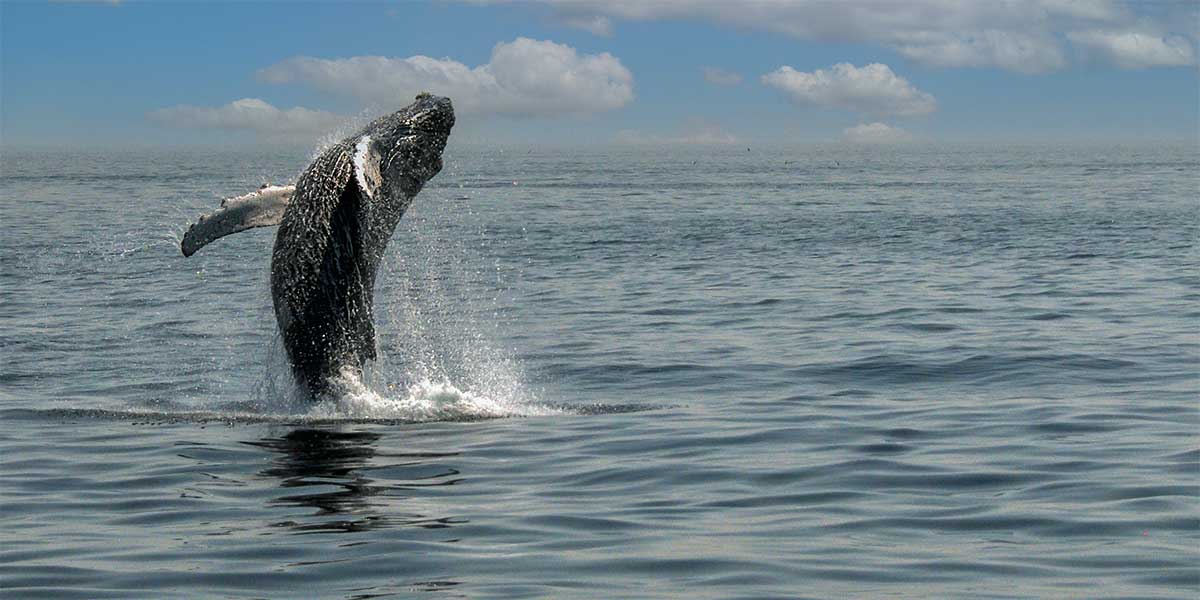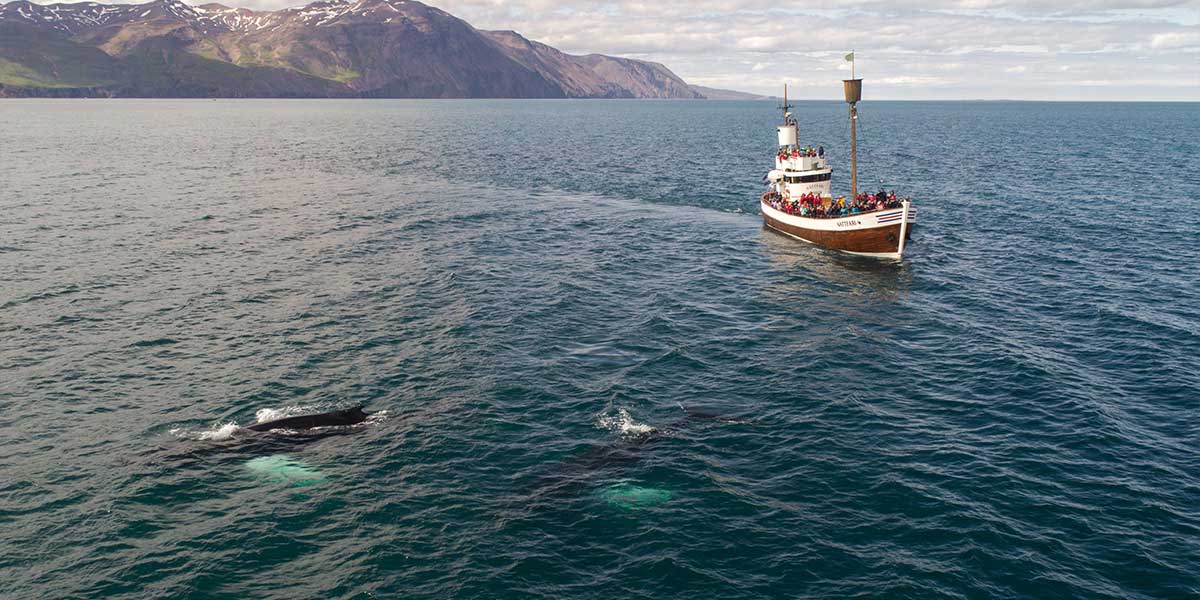Whale Watching Hawaii Big Island: Winter Migration Magic
Just as we daydream of escaping the chilly dregs of winter and heading to Hawaii, humpback whales do just the same, swimming 3,000 miles south from the Arctic to spend several months in the warm, shallow waters surrounding the islands. It’s one of the world’s most impressive annual migrations, with over ¾ of the Pacific humpback whale population participating in whale watching on the Big Island of Hawaii. Arriving in Hawaiian waters after 1-2 months of continuous swimming, nursing mothers arrive first, usually in late November, followed quickly by mothers with youth whales (who are learning the migratory route for the first time), adult males, and pregnant females. By January, it’s a full-on whale party off the Big Island, with extensive whale activity continuing through early April, when the whales make their way back north, wrapping up the astonishing 6,000-mile roundtrip.
Whether watching from the shoreline or out on a guided charter boat, if you visit between November and April, it’s prime whale-watching season. Seeing one whale is breathtaking, but spotting one after another breaching, blowing, and playing just a few hundred yards away is a once-in-a-lifetime experience. During the peak of “whale season” in Hawaii, it’s not uncommon to see 20-30 whales per hour, a non-stop and awe-inspiring display of their magnificent beauty. Take a short drive from our Big Island bed and breakfast, and look for these gentle giants just offshore, making your winter getaway extra magical. Take a swim and put your head in the water to hear their whale songs.

Spotting Whales from the Shore in Hilo
Kohala, the traditional Hawaiian term for whales, has always been revered in Hawaiian culture and is directly linked to Kanaloa, the ocean god. Dating back to when Polynesians first settled in Hawaii, islanders have spotted whales from the shoreline, their massive 45-60-foot-long bodies fantastically breaching the water. You can participate in this ancient Hawaiian whale-watching pastime by heading 30 miles north to Hilo Bay, where the water is stunningly clear, drawing in humpback whales close to shore. For the best view, hike out on the Hilo Bay breakwater, where a rock pathway allows you to walk an hour out, surrounded by water on all sides. It’s also one of the best fishing spots on the Big Island, so bring your rod and reel if you want to cast a line while looking out for whales. A helpful hint: Whale-watching is often best in the morning, when the wind is minimal, making the ocean surface “glassy,” allowing for easier spotting of whale movements.
Another excellent spot nearby is Onekahakaha Beach Park, where local whale-spotting enthusiasts often gather in winter. Order to-go custom poke bowls at Suisan Fish Market – one of our favorite places to grab a bite in Hilo – and picnic near the tide pools at Onekahakaha. The sandy bottom swimming area is kid-friendly, and between whale-watching sessions with your binoculars in hand, it’s a perfect place for some laidback snorkeling.
Charter Boat Trips – Heading Out to Where the Whales Gather
Although shoreline sightings are a great introduction, heading out on a charter boat adds to the exhilaration, with whales breaching clear of the ocean surface and slapping their fins on the water so close that you may even feel their spray from the viewing deck. The expert crew at Malama Charters leads whale-watching excursions out of Hilo Harbor every day from late December through April, heading out at 8 am, 11 am, and 2 pm. Malama acquired their 32-foot boat in 2019, only to have their guided charter trips shut down by the pandemic soon after, but they used the boat to fish for the local community throughout the long months of COVID-19, speaking to their goodwill.
On your 90-minute charter outing, their knowledgeable captains will take you to the ideal spots where whales congregate, cruising north and south of Hilo Bay to various shallow-water whale hotspots. There’s no experience like witnessing mother whales in the wild with their baby calves, who are already 15 feet long at birth, and nurse for up to a year. Male whales court females, too, singing songs to woo them and establishing dominance in the pecking order. You’ll also likely see other captivating sea life like honu (endangered green sea turtles) and spinner dolphins, known for leaping out of the water playfully, much like humpback whales.

Joining the Annual Whale Count – Community-Led Observation and Conservation
After nearly going extinct by the 1960s due to predatory hunting and whaling, the humpback whale has rebounded dramatically, becoming an inspiring success story amid overfishing and oceanic degradation. Today, the Pacific humpback whale population, numbering around 26,000, engages in whale watching Hawaii Big Island, as most of them undertake the annual winter migration south to Hawaii. The Hawaiian Humpback Whale National Marine Sanctuary, established in the early 1990s, passionately advocates for their protection and conservation, including essential whale watching initiatives off the Big Island. Monitoring their population involves three volunteer-led Sanctuary Ocean Counts of whales on the Hawaiian islands annually in January, February, and March. The first count on Jan 27th, 2024, saw volunteers spotting 324 humpbacks at 40 shoreline sites. The upcoming Ocean Counts on Feb 24 and March 30, 2024, invite you to join whale-spotting festivities, playing an essential role in recording data about these remarkable marine mammals during your whale watching experience in Hawaii’s Big Island.
Stay with us and escape to Hawaii this winter alongside the humpback whales!

